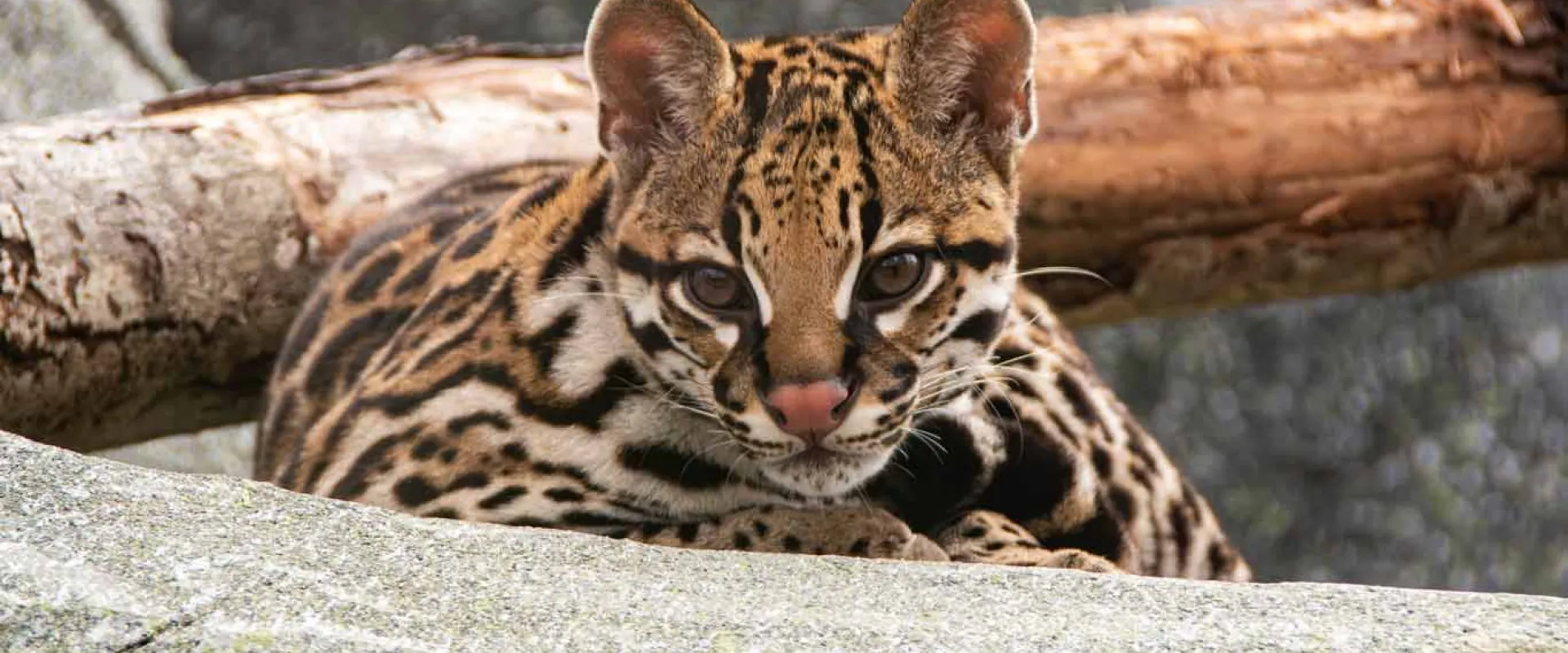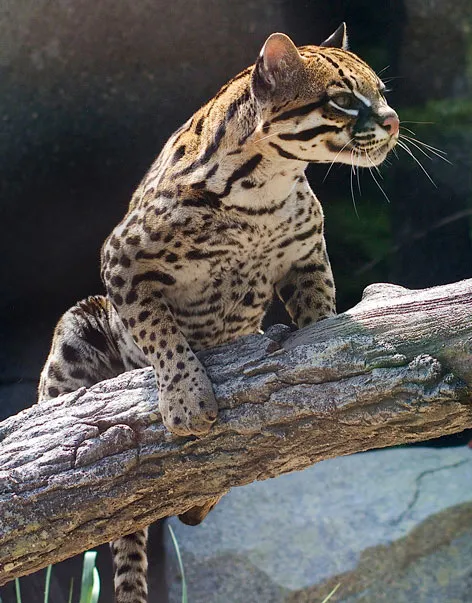Did you know ocelots are uniquely patterned with both spots and stripes, with a single white spot on the back of the ears? Learn more about ocelots.
Ocelots are solitary and maintain their own territories in the wild, only tolerating other ocelots when they are ready to mate. We have a breeding pair so keep them separated until we see signs the female is receptive to breeding. At that time we allow them to spend about 4 days together. In this four-day period they can breed many times. One of the training projects with ocelots is to train the female to allow ultrasound to detect pregnancy. The female voluntarily stands on a platform with a hatch in the bottom where a vet can safely reach her belly with an ultrasound wand. At the same time, the keeper rewards the ocelot with food for cooperating.
The ocelot diet is greatly varied. They receive mice, rats, guinea pigs, ground Toronto zoo diet, salmon, herring, capelin, chicken, rib bones, and even stew meat for a treat!
- Ocelots are solitary, secretive, and territorial cats.
- Spend most of their time on the ground, but are good climbers and jumpers
- They tend to pluck the feathers of birds they catch to eat.
- Extinct in Wild (EW)
- Critically Endangered (CR)
- Endangered (EN)
- Vulnerable (VU)
- Near Threatened (NT)
- Least Concern (LC)
- Not Evaluated (NE)



